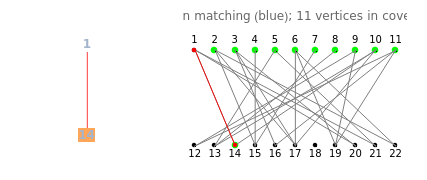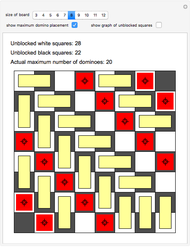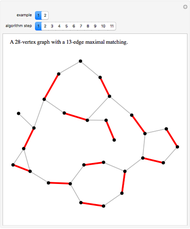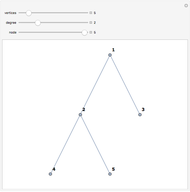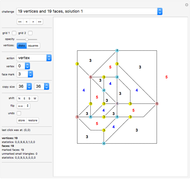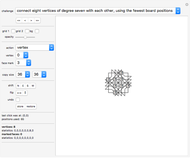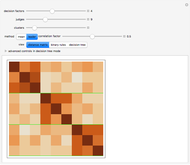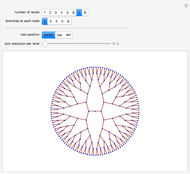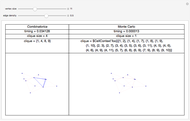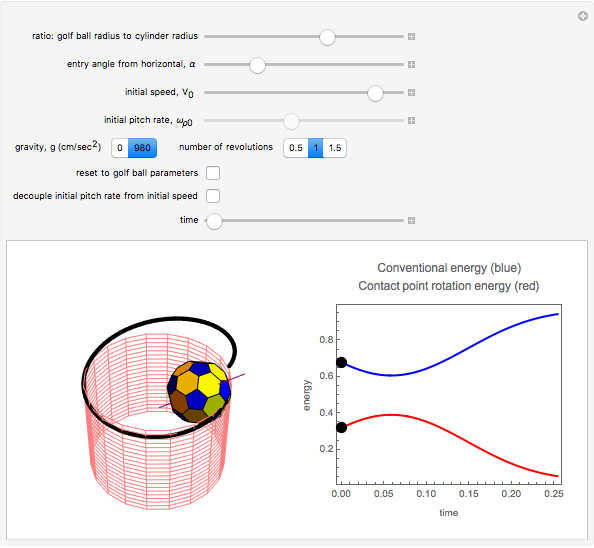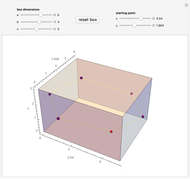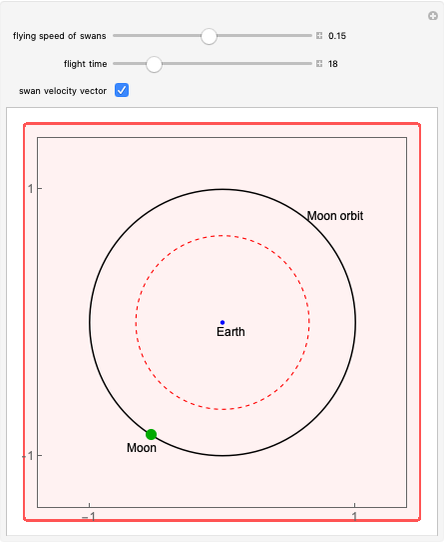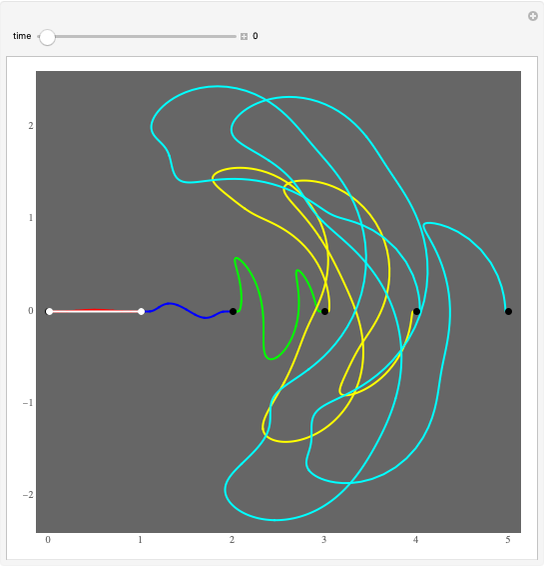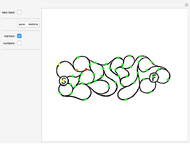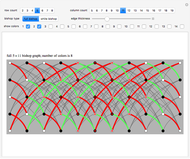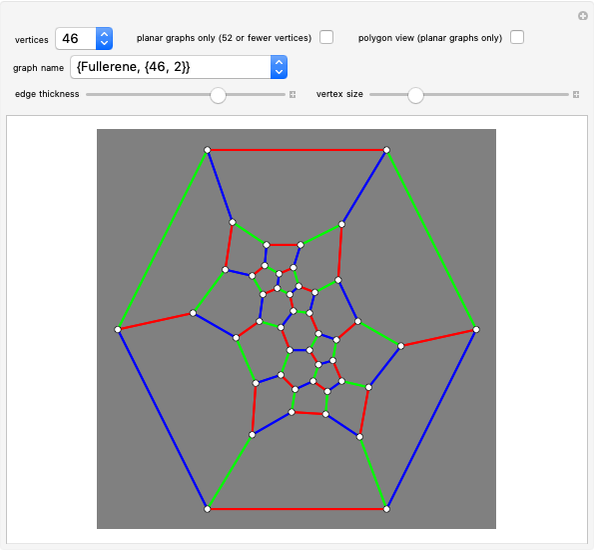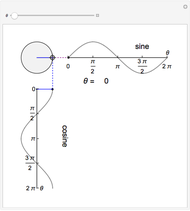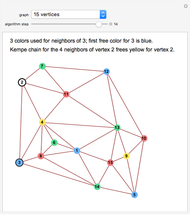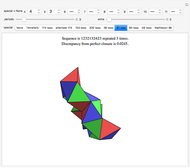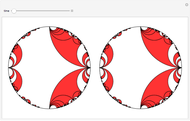The Hungarian Maximum Matching Algorithm

Requires a Wolfram Notebook System
Interact on desktop, mobile and cloud with the free Wolfram Player or other Wolfram Language products.
Given a bipartite graph (one in which all edges go between the two parts), the Hungarian algorithm finds a matching (i.e., a set of disjoint edges) of maximum size. The algorithm starts with any matching  (the empty matching is used here) and constructs a tree via a breadth-first search to find an augmenting path: a path
(the empty matching is used here) and constructs a tree via a breadth-first search to find an augmenting path: a path  that starts and finishes at unmatched vertices whose first and last edges are not in
that starts and finishes at unmatched vertices whose first and last edges are not in  and whose edges alternate being outside and inside
and whose edges alternate being outside and inside  . If the search succeeds, then the symmetric difference of
. If the search succeeds, then the symmetric difference of  and the edges in
and the edges in  yield a matching having one more edge than
yield a matching having one more edge than  ; we make that change and then search again for a new augmenting path. If the search is unsuccessful, then the algorithm terminates and
; we make that change and then search again for a new augmenting path. If the search is unsuccessful, then the algorithm terminates and  must be the largest-size matching that exists. Further, the tree data provides a vertex cover (i.e., a set of vertices covering all edges). If the tree search is unsuccessful, as it is at the end, then the size of the vertex cover is the same as the size of the matching, which proves that the final matching has the maximum size possible.
must be the largest-size matching that exists. Further, the tree data provides a vertex cover (i.e., a set of vertices covering all edges). If the tree search is unsuccessful, as it is at the end, then the size of the vertex cover is the same as the size of the matching, which proves that the final matching has the maximum size possible.
Contributed by: Stan Wagon (Macalester College) (June 2010)
Open content licensed under CC BY-NC-SA
Snapshots
Details
In the snapshots the graph has 18 vertices. The initial augmenting path is just the edge {1, 15}. At the next-to-last step the augmenting path is {8, 13, 5, 14, 4, 17}, and so the final maximum matching has the edges {8, 13}, {5, 14}, and {4, 17} added. The subsequent tree search fails, but the orange vertices in the tree—13, 14—together with the upper part of the graph with the uncolored vertices in the tree deleted—1, 2, 3, 4, 6, 7—define a vertex covering of size 8 that proves that the matching of size 8 is the largest possible.
Proofs of the facts stated here can be found in [1]. Similar problems can be formulated for weighted graphs, and a maximum-weight matching can be found by similar techniques (Kuhn–Munkres algorithm). And similar problems can be formulated for general graphs (not bipartite) and solved by an algorithm known as the Blossom algorithm due to J. Edmonds. That is more complicated than the relatively simple algorithm that handles the bipartite case; see [2].
[1] R. A. Brualdi, Introductory Combinatorics, fourth ed., Saddle River, N.J.: Pearson Prentice Hall, 2004.
[2] W. J. Cook, W. H. Cunningham, W. R Pulleyblank, and A. Schrijver, Combinatorial Optimization, New York: Wiley, 1998.
Permanent Citation
"The Hungarian Maximum Matching Algorithm"
http://demonstrations.wolfram.com/TheHungarianMaximumMatchingAlgorithm/
Wolfram Demonstrations Project
Published: June 30 2010
